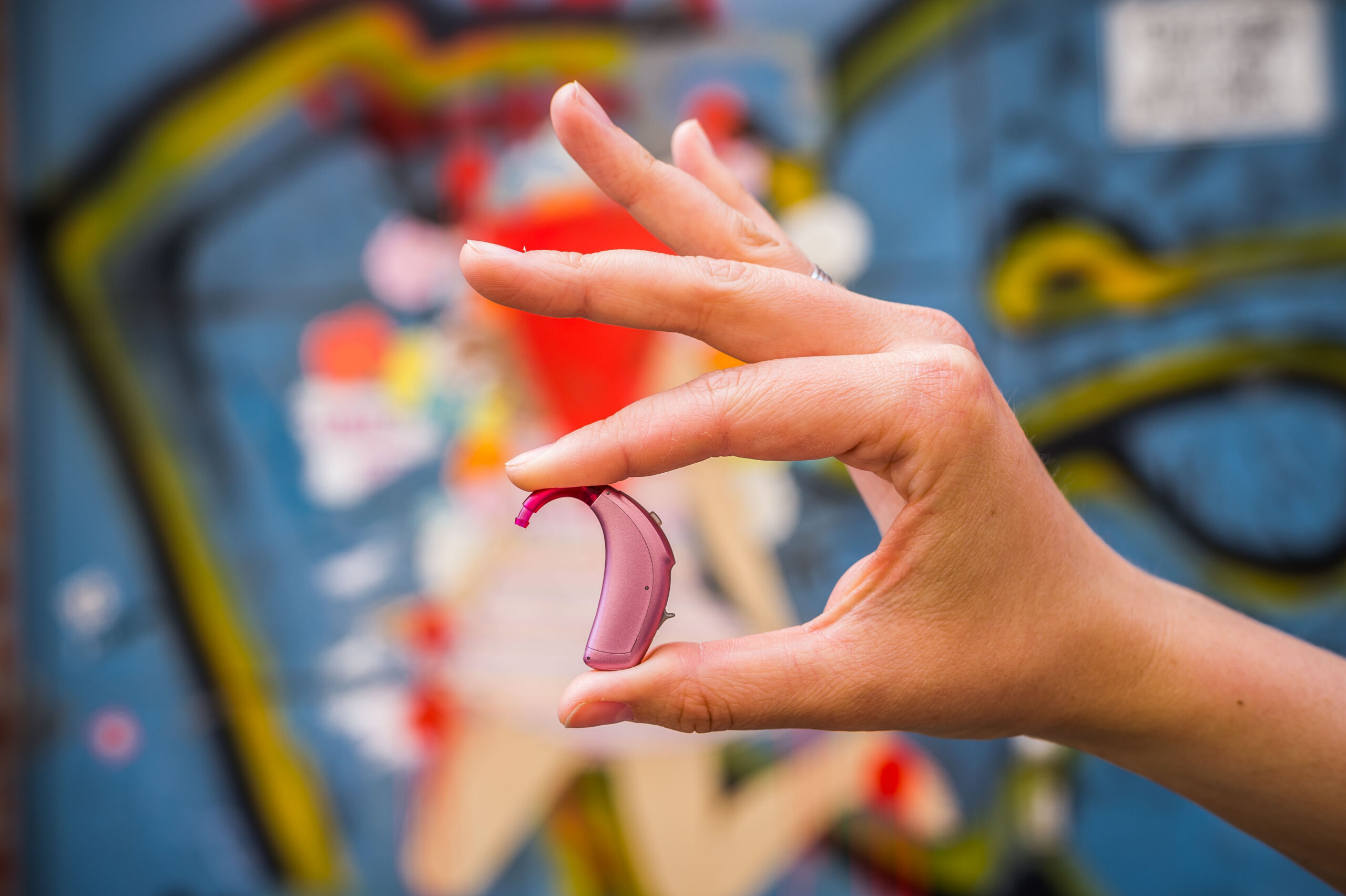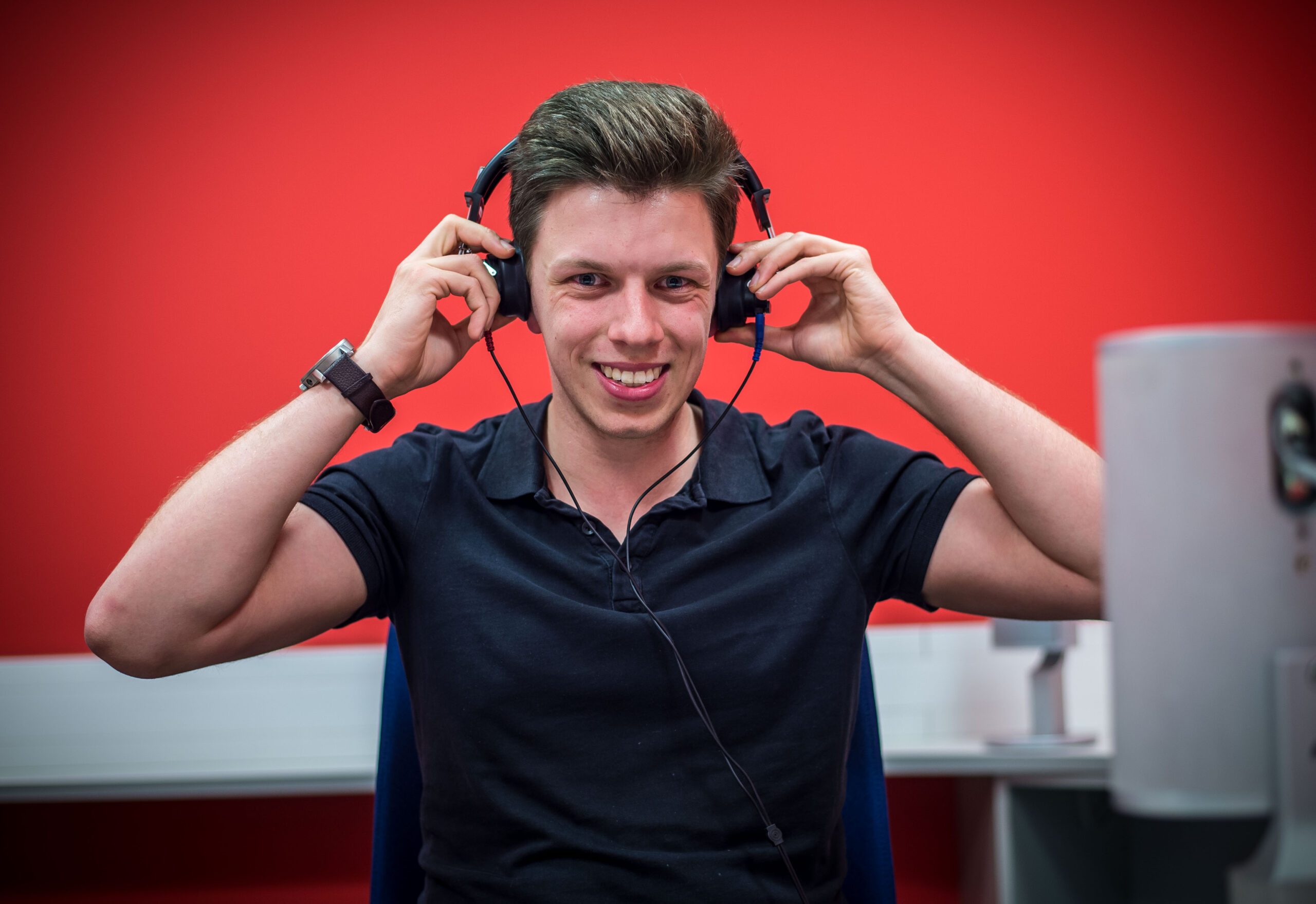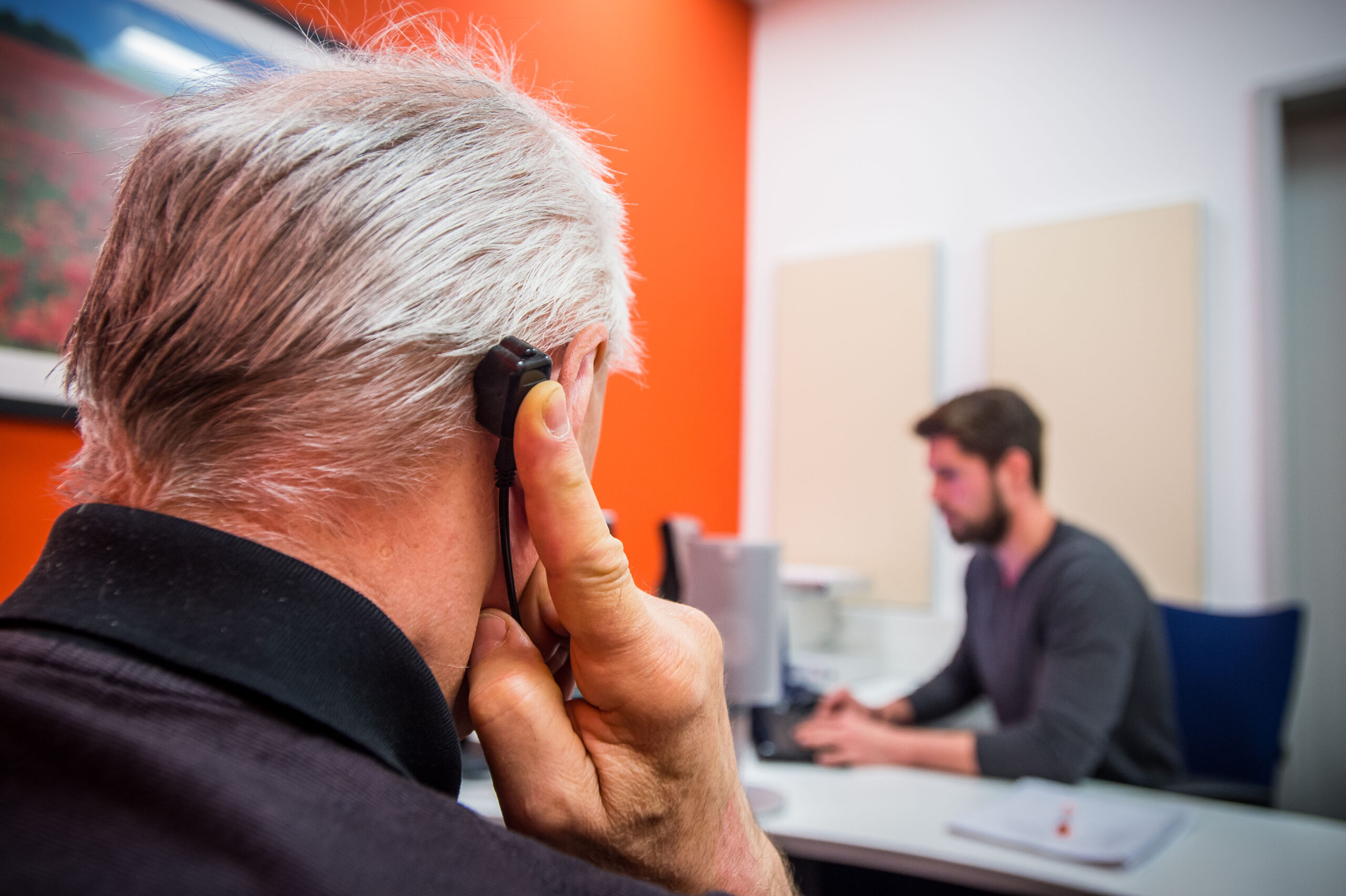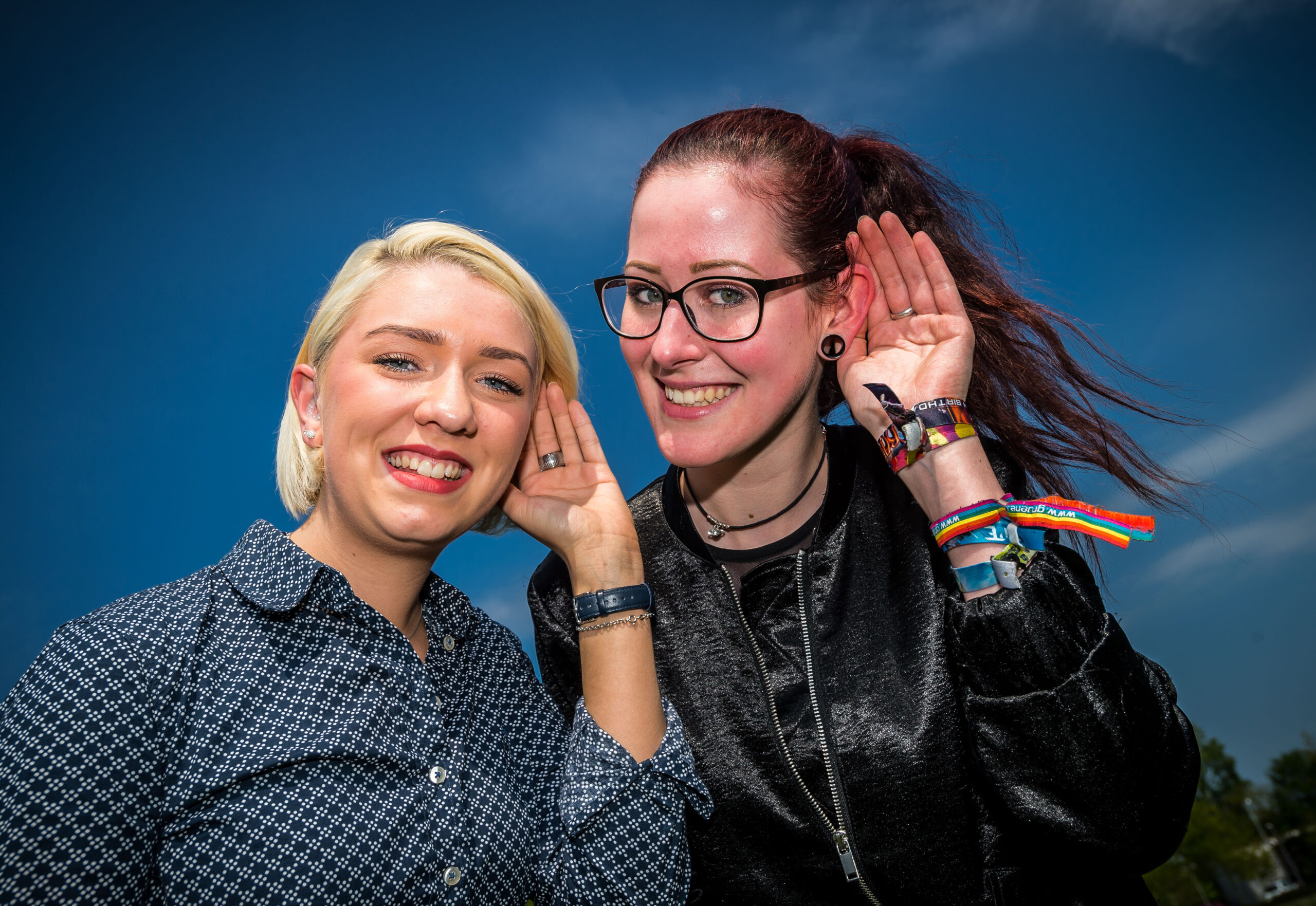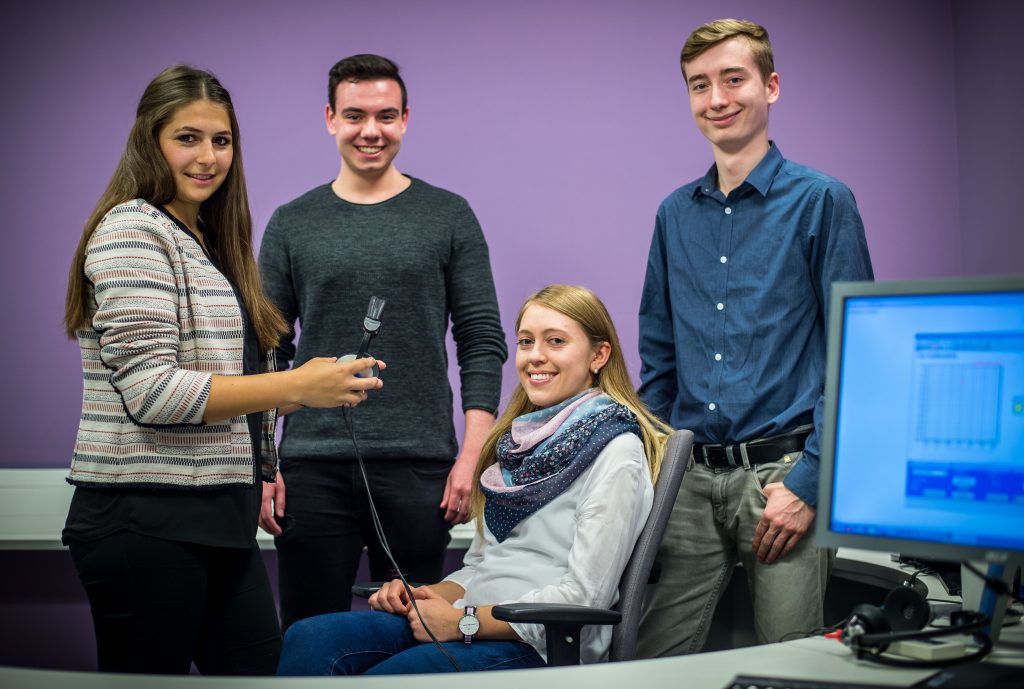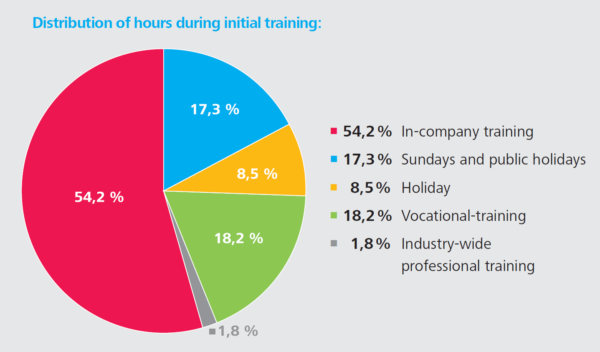Hearing Aid Professional
Hearing Aid Professionals are responsible for the supply of hearing systems to people with a hearing impairment. Only hearing aid professionals with a three-year dual vocational training are qualified to perform these services in Germany. After all, hearing acoustics is considered a health profession trade which includes hazardous tasks: Hearing Aid Professionals work directly on and in the ear of their patients with devices which, when not properly operated, may damage the hearing. The excellent vocational training of hearing aid professionals thus does not only ensure the best possible supply, but also the customers’ health.
Hearing is my Passion
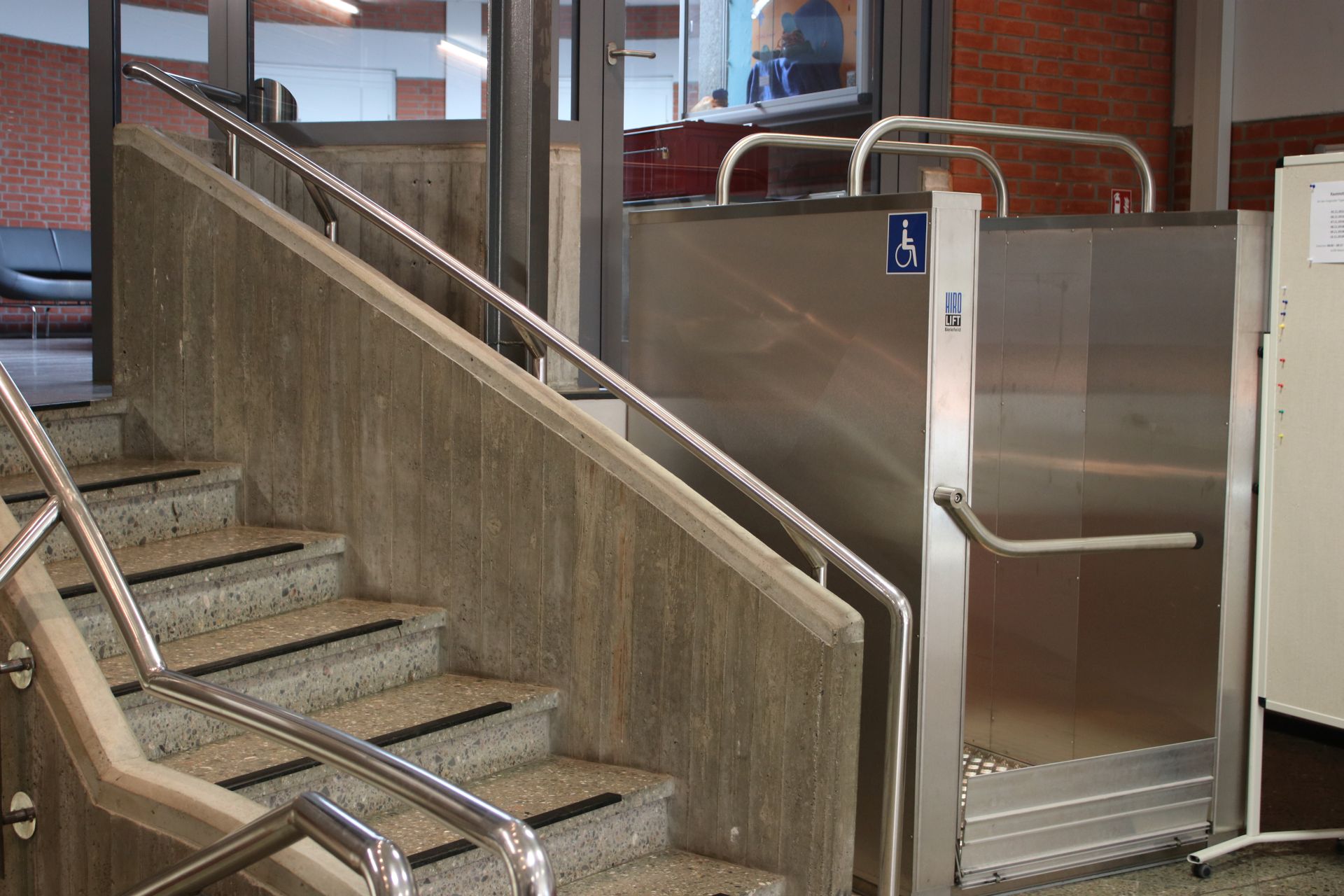
Downloads
Info-Flyer
Vocational Training
Find a local hearing acoustic company
The vocational training to become a Hearing Aid Professional
What awaits you?
During the three-year vocational training, you will work as an apprentice in your training company and will receive more than 650 hours or practical and theoretical training. Added to this will be another 1,440 hours of full-time theoretical training blocks at the Federal Vocational School in Lübeck, as well as 120 hours of industry-wide training at the Academy of Hearing Acoustics. The training is completed with the journeyman examinations and you will receive a journeyman certificate. As a journeyman, you can work as a hearing-aid professional, however, you are not entitled to train apprentices, operate your own business or work without the supervision of a Master Craftsman.
In the context of the vocational training in this craft, the highest qualification is the Master Craftsman Certificate, which requires another year of professional training at the Academy of Hearing acoustics after the journeyman examination. The Master Class comprises another 1,010 hours of theoretical and 550 hours of practical training and will be concluded with a Master Craftsman Examination. As a Master Craftsman, you will be able to train apprentices, supervise journeymen, start your own business, manage a branch or work as an expert in the hearing device industry. You also have the option to acquire the European Diploma as Hearing Aid Professional while preparing for the Master Craftsman Examination.
The German system of vocational training has developed to a modular system, which offers young professional a lot of opportunities to shape their training and professional career individually. There are also manifold options for further and advanced professional trainings on journeyman or master craftsman level. You will see that hearing acoustics is not a one-way street but a path into a secure, challenging, and interesting future, which you can design as you like.
The job description of the hearing care professional
There are only few professions which involve as many skills and fields of activity as the one of a hearing-aid professional. For the individual fitting of hearing systems, not only craft skills are required but also medical and audiological-technical knowledge as well as sound business and a high degree of human and social competencies.
The scope of practice of a hearing aid-professional clearly set itself apart from that of an ENT physician. However, both work closely together. The ENT specialist is responsible for the diagnosis of a hearing impairment, the prescription and the follow-up inspection once a patient has been supplied with a hearing system. His/her professional code prohibits the supply of hearing systems, as hearing acoustics is a commercial health trade. The fitting of hearing systems is thus also not included in the professional training of a medical doctor. Only hearing aid professionals are qualified to perform these services.
The occupational image of a hearing-aid professional embraces vastly different skills and competencies, which are laid down in the regulation on the vocational training for hearing-aid professionals. On the one hand, the professional training of hearing-aid professionals comprises the skills, knowlegde and competencies, which define the profile of the occupation. These are:
- determine and evaluate individual hearing profiles,
- produce and assess profession-related audiological otoscopic findings,
- advice patients regarding the possible supply with hearing systems, assistive hearing systems, special devices as well as accessories, while considering their individual hearing expectations,
- produce three-dimensional depictions of the outer ear,
- make ear moulds, so called otoplastics, individual hearing protection and custom-made otoplastics,
- adapt hearing systems and assistive hearing systems according to the individual hearing profile,
- patient care and rehabilitation measures,
- carry out service and maintenance works on hearing systems, assistive hearing systems and special devices, as well as accessories
- organize and manage business and settlement processes of a hearing acoustic business.
Hearing-aid professionals also offer competent advice on tinnitus, implantable hearing systems and pediatric audiology to their patients respectively customers. The diverse qualified tasks require specific professional skills, as for example:
- scientific knowledge, especially in the field of applied acoustics respectively psycho acoustic, i.e. the impact of acoustic stimulus on our hearing perception, or
- in the technical field, e.g. when it comes to the question „how do the little hearing computers with their digital signal processing effect a better speech understanding?“,
- in the medical field, be it with anatomical, physiological or questions relating to the pathology of the hearing, or in the
- psycho-social field, when it comes to dealing with hearing-impaired people, during psycho-acoustic measurements or during the training process of getting used to hearing-aids.
On the other hand, the vocational training of a hearing-aid professional encompasses skills and knowledge, which will be taught in the professional context. These are:
- vocational eduction, labor and collective bargaining law,
- structure and organization of the training company,
- safety and health protection at the workplace,
- environmental protection,
- professional and technical communication as well as the protection of the patients‘ data,
- planning and organisation of work processes and
- implementation of quality assurance measures.
The graphic illustrates the necessary basic professional competencies and also shows the hearing aid professional’s wide range of skills.
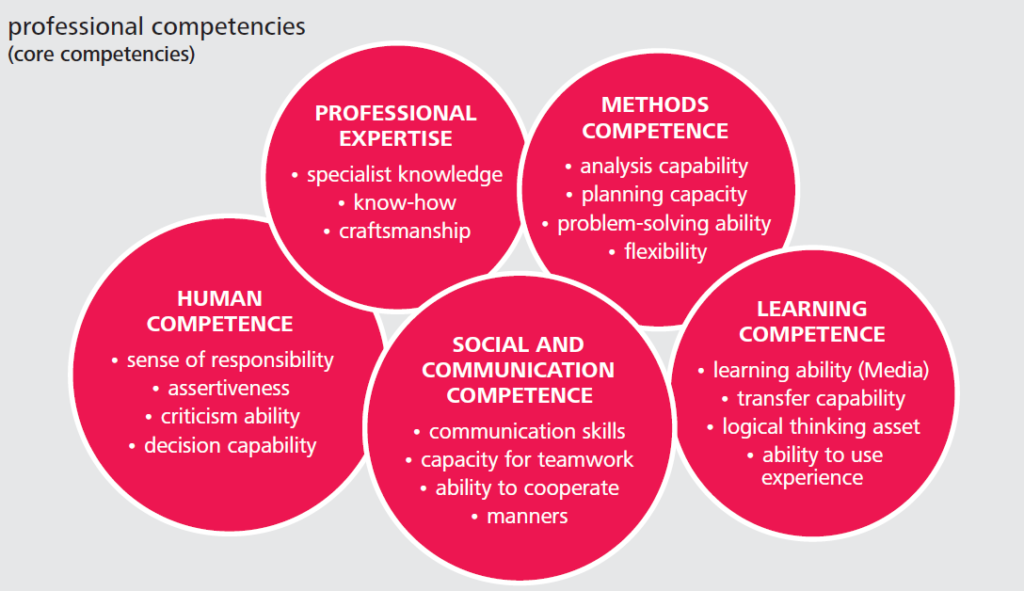
An alternative to university studies
while keeping all your options open
Learning a skilled trade, such as the profession of a hearing aid professional, is indeed a real alternative to university studies. Moreover, there is basically no unemployment in this line of work, as for the last years there were always more vacancies for journeymen and Master Craftsmen/women on the labour market than were available.
The craft trade of a hearing aid professional is considered a health trade, although it does not have much in common with what you usually have in mind, when thinking of the word “craft”. The requirements in the apprenticeship to become a hearing aid professional are very demanding. This should not deter though! At the National Vocational School for Hearing Aid Professionals in Luebeck, teachers know that quite often students with intermediate-level education are particularly motivated and committed, once they have decided for this profession. They realize soon that this unique profession is very versatile and helps other people.
Theoretical knowledge matters just as much as practical skills, social competences and creativity, when it comes to finding the optimal, individual solution to improve the hearing of your future customers.
As an apprentice you play an important role in your training business and will be treated as a real team member. In a way, you will have entered the grown-up world: You earn your own money and pay social
security contributions. This is a very satisfying feeling and will give you self-confidence and in this respect apprentices may feel a little superior to university students.
Another positive aspect is the recognition you will get from the customers. Having a hearing impairment, means to be disconnected from the world. You can help themand once they are able to hear well again,
they will be very grateful. You will experience soon enough how much joy you can give to a person, who for the first time in many years, is able to hear and understand everything.
The human factor is extremely important during the process of fitting hearing systems. Hearing aid professionals do not just sell hearing aids, they fit complete systems according to the individual hearing loss of their customer. Each hearing loss is different and unique, like a finger print. Therefore this line of work involves a lot of responsibility and is incredibly satisfying.
It is a very diverse profession which overlaps with many other fields of expertise. This is what makes it interesting and challenging.
From university to hearing acoustics
History
The profession of hearing aid professional exists for more than 50 years. The classification as a health trade has proven and the interaction of theoretical and practical aspects in the dual system of apprenticeship has become exemplary worldwide.
When ENT specialists first started passing on the fitting of hearing aids to technically versed retailers in the early 1950ies, a new profession began to form in Germany: the „hearing-aid acousticians“. In 1952, they already founded the first professional association. For a long time, there was a discussion, whether this new profession should be a craft, a commercial or rather an academic trade. Only in 1960 a decision was reached: since then hearing-aid acousticians defined themselves – based on the model of opticians – as a health craft.
In 1966 the profession was legally recognized as a health craft by the state. Up to 1985, Dr. Werner Pistor, so-to-speak the doyen of this new branch, was solely responsible for the organization of this unique profession. The regulation on the vocational training was last reviewed in 2016, reflecting the new requirements, especially relating to technical advances. At the same time, the name was changed from “hearing-aid acoustician” to “hearing-aid professional”.
